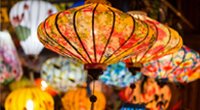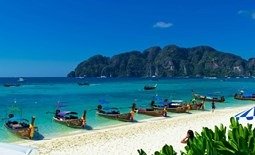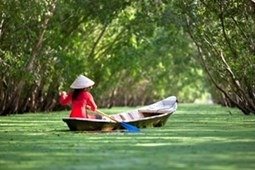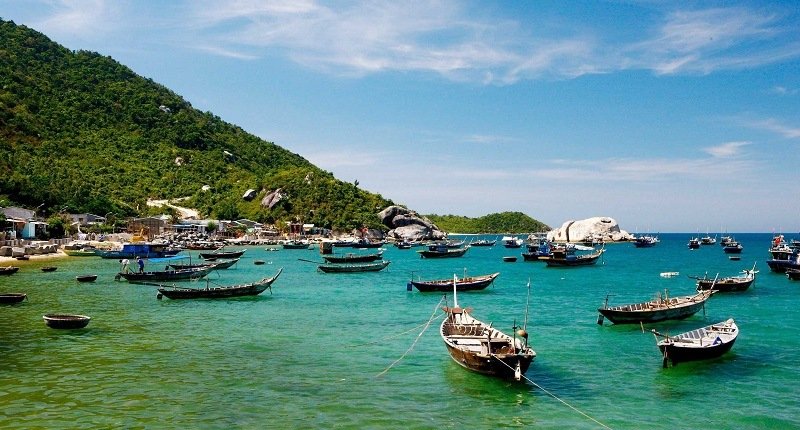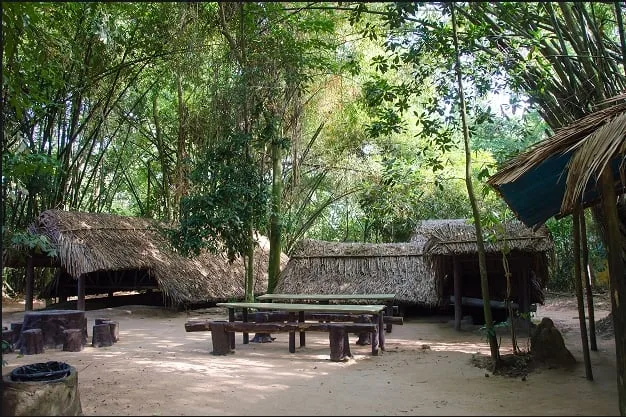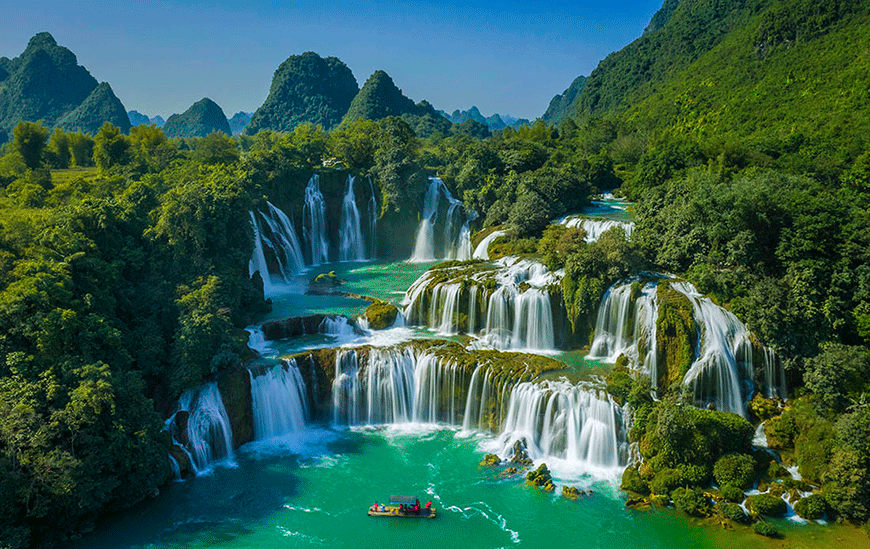Contents
ToggleWhere Are the Cham Islands?
The Cham Islands, known locally as Cù Lao Chàm, form a small but captivating archipelago in central Vietnam. Covering an area of about 15 km², the islands are located just 18 km off the coast of Cua Dai Beach in Hoi An and around 45 km from Da Nang. Travelers can reach them with ease: a 30 km drive from Da Nang to Hoi An, followed by a short and scenic speedboat or ferry ride across the turquoise waters of the East Sea.
The archipelago consists of eight islands, each offering a slightly different landscape and character. The largest, Hon Lao, is the heart of local life. It is home to most of the archipelago’s 3,000 inhabitants, who live in charming fishing villages and sustain themselves through fishing, small-scale farming, and increasingly, eco-tourism. This island also hosts the majority of homestays, restaurants, and diving centers, making it the most popular base for visitors.
Surrounding Hon Lao are seven smaller islets—Hon Kho Me, Hon Kho Con, Hon La, Hon Dai, Hon Mo, Hon Tai, and Hon Ong—each adding to the natural beauty and diversity of the Cham Islands. While some are little more than rugged, rocky outcrops, others boast sandy beaches, coral reefs, or lush vegetation that invite exploration.
Recognized by UNESCO as part of the Cu Lao Cham–Hoi An Biosphere Reserve, the islands are celebrated for their rich marine life, coral reefs, and pristine beaches. Beyond their natural beauty, the Cham Islands also carry cultural and historical significance, with ancient temples and traces of Cham civilization blending with today’s vibrant fishing culture.
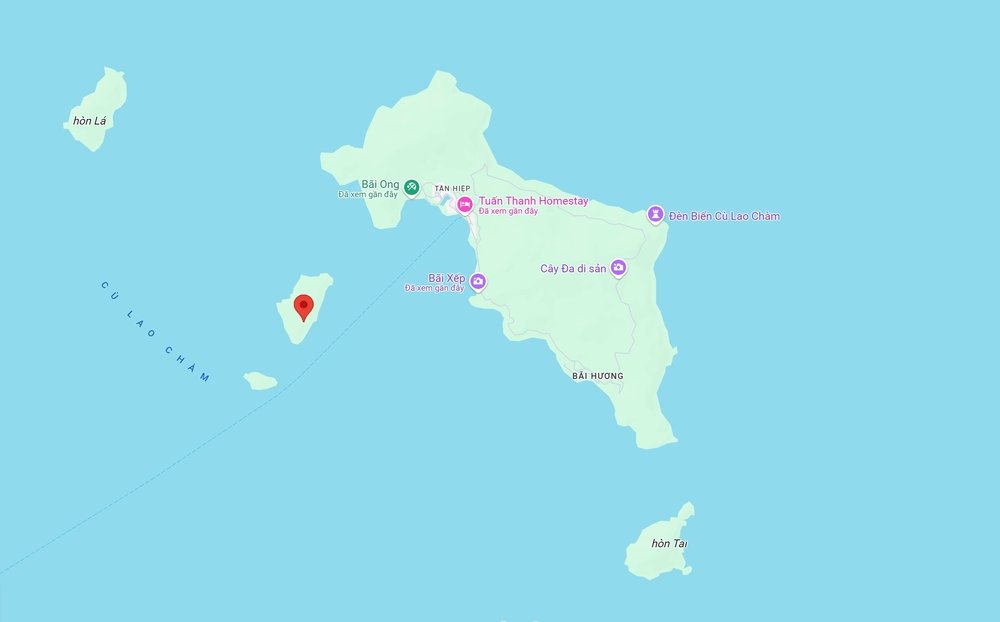
First Impressions of Cù Lao Chàm
Arriving at the Cham Islands is an experience that engages all the senses. As the boat slows and approaches the shore, the first thing that catches your eye is the brilliant turquoise water, so clear that you can see the sandy seabed and schools of fish darting beneath the waves. The coastline unfolds with powdery white beaches, fringed by rows of coconut palms swaying lazily in the breeze, while clusters of colorful wooden fishing boats bob gently in the bay. Most travelers first arrive at Bãi Làng, the main village, where traditional houses, small markets, and smiling locals instantly set a warm and welcoming tone.
Even before setting foot on land, the journey across the sea is part of the magic. The speedboat ride takes just 20–30 minutes, but the memories linger much longer. The cool spray of seawater on your skin, the salty tang of the ocean air, and the sight of the coastline of Hoi An fading into the distance make it feel like you are truly leaving the mainland behind. If you depart early in the morning, the rising sun paints the horizon in shades of pink and gold, casting a dreamlike glow over the water. On calm days, the ride is smooth and exhilarating, while during slightly rougher seas, the thrill of bouncing over waves adds an adventurous touch.
Despite the islands’ growing popularity, Cù Lao Chàm retains an unspoiled charm. Beyond the busy arrival area, quieter corners quickly reveal themselves—secluded beaches where you might have the sand all to yourself, jungle trails that wind through lush hills, and smaller islets where time seems to slow down. It’s this balance of accessibility and tranquility that makes the Cham Islands so special: you can enjoy vibrant village life in one moment and escape to pure serenity in the next.
For many visitors, the first impression is one of timelessness. With no high-rise buildings or crowded streets, the islands feel like a step back into a simpler world, where fishing remains the heartbeat of daily life and the natural environment still sets the rhythm.
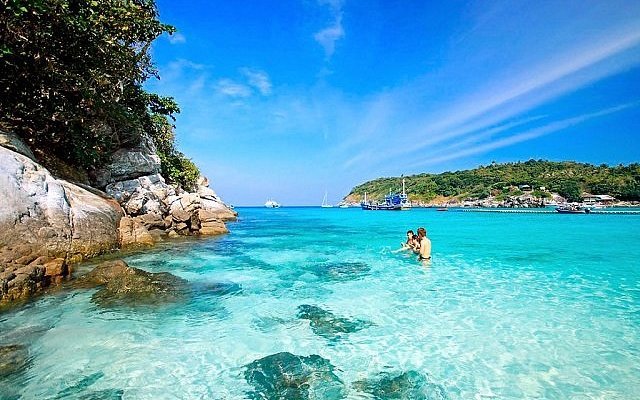
Best Things to Do on the Cham Islands
Whether you’re drawn by history, beaches, or adventure, the Cham Islands offer a surprisingly diverse range of experiences. Here are the top things to do:
1. Visit the Marine Museum & Ancient Cham Well
Begin your journey at the Cham Island Marine Conservation Museum, where you’ll find interactive displays about local marine life, coral ecosystems, and the community’s efforts to protect this fragile environment. It’s a great place to gain context before diving into the natural wonders of the islands.
Afterwards, head to Xóm Cấm Village to see the 200-year-old Cham Well, a relic from the Champa civilization. Locals say it never runs dry, even during the hottest months. Many villagers still use this well for daily water, and it has become a symbol of both survival and heritage on the islands.
2. Snorkeling and Diving
The Cham Islands are part of the Cu Lao Cham Biosphere Reserve, recognized by UNESCO, making them one of Vietnam’s best snorkeling and diving spots. Just a few meters from the shore, you can swim over colorful coral reefs teeming with tropical fish. Snorkeling tours usually provide masks, fins, and life jackets, making it accessible even for beginners.
For a deeper adventure, join a scuba diving tour with certified instructors. The visibility can be excellent on clear days, revealing vibrant coral gardens, clownfish, parrotfish, and sometimes even seahorses.
3. Relax on Stunning Beaches
The islands boast several idyllic beaches where you can slow down and soak up the sun. Bãi Ông is lively, with beachside cafés, loungers, and water activities. Bãi Làng, near the main village, is perfect for a quick swim between sightseeing stops. If you prefer peace and seclusion, head further out to smaller coves hidden behind lush greenery.
Many travelers love spending the afternoon at a rustic beach bar like Sunset Pub, sipping fresh coconut juice or a cold beer while gazing out at the turquoise sea.
4. Explore Tân Hiệp Market
Located near the pier, Tân Hiệp Market is the beating heart of local trade. Here you can browse stalls selling dried squid, anchovies, shrimp paste, and other specialties from the islands. You’ll also find colorful seashell jewelry, woven hats, and hand-embroidered scarves. Don’t be shy about bargaining—it’s part of the experience.
5. Hike to Eo Gió Viewpoint
If you’re up for a walk, follow the trail from Bãi Làng to Eo Gió, a cliffside viewpoint just 3 km away. The path winds through local homes and patches of forest before opening up to sweeping views of the ocean. Sunset here is magical, with golden light reflecting off the waves and fishing boats returning to shore.
6. Wildlife Encounters
The Cham Islands’ forests are home to rare species, including the endangered golden monkey. If you’re lucky, you might spot them swinging through the trees while hiking. Please remember: look, but don’t touch or feed them—human food can harm the animals and disrupt their natural behavior.
7. Go Fishing with Locals
For a truly authentic experience, join a fishing or squid-catching trip with local fishermen. You’ll board a traditional wooden boat, learn the basics of casting nets or using lines, and enjoy the thrill of catching your own dinner. Many tours include grilling the fresh catch right on the boat, paired with rice wine and plenty of laughter.
8. Island Hopping
Beyond the main island of Hòn Lao, the Cham archipelago includes seven smaller islets such as Hòn Khô Con, Hòn Khô Mẹ, and Hòn Ông. Boat tours can take you to hidden beaches, snorkeling spots, and untouched coves where the crowds disappear. These mini-excursions reveal the quieter, wilder side of Cù Lao Chàm, perfect for travelers seeking solitude and raw beauty.
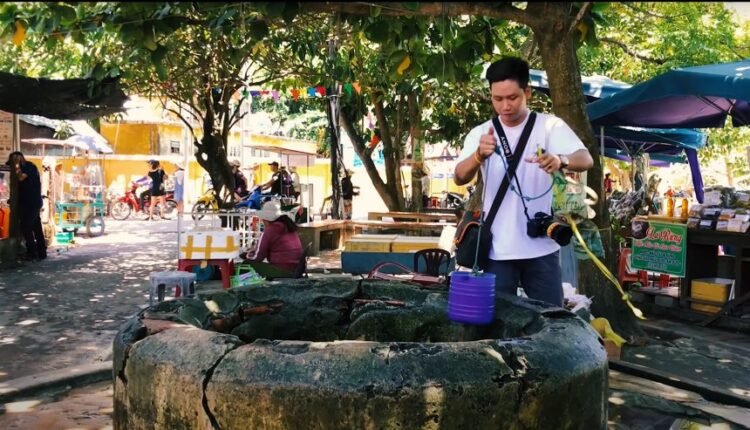
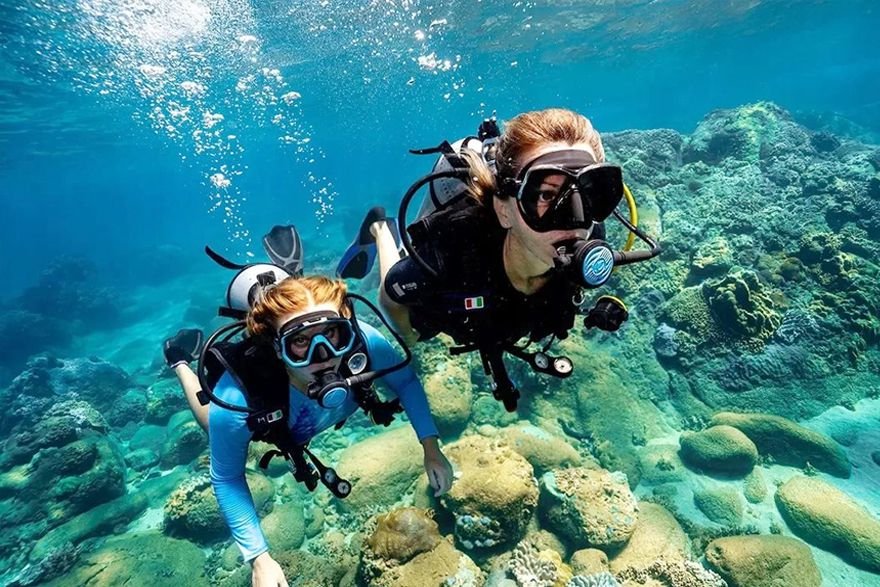
Costs & Entrance Fees for Visiting the Cham Islands
Planning a trip to the Cham Islands is not only about picking the right activities—it’s also about understanding the costs involved. Here’s a breakdown of the main expenses travelers should expect:
🚤 Transportation Costs
- Speedboat Round-Trip (from Cửa Đại Port, Hoi An):
The fastest and most popular way to reach the islands. Prices range from 400,000 – 500,000 VND per person, and the journey takes about 20–30 minutes depending on sea conditions. Most boats depart in the morning (8:00–9:00 AM) and return in the afternoon (2:00–3:00 PM).
- Wooden Boat (for budget travelers):
A slower but cheaper option. Tickets cost around 150,000 – 200,000 VND one-way, and the ride lasts 1.5–2 hours. It’s less comfortable but perfect if you want a more traditional experience.
- Private Speedboat Charter:
For groups or those who prefer privacy, chartering a boat can cost 2,000,000 – 3,000,000 VND depending on group size and duration.
🎟️ Entrance & Conservation Fees
- Cham Islands Entrance Fee: 70,000 VND per person
- Environmental Protection Fee: 30,000 VND per person
👉 These are compulsory fees collected upon arrival. They go toward maintaining the biosphere reserve, waste management, and protecting coral reefs.
🏝️ Day Tour Packages
If you prefer everything organized, day tours are widely available in Hoi An and Da Nang. They typically include:
- Round-trip speedboat transfers
- Entrance + environmental fees
- Guided snorkeling or diving
- Lunch (usually fresh seafood or local specialties)
- A short cultural tour of Bãi Làng village or Tân Hiệp Market
💵 Prices: 500,000 – 800,000 VND per person, depending on inclusions.
🌊 Private & Premium Tours
For those seeking comfort or more flexible itineraries:
- Private tours generally start from 1,200,000 VND per person, with customizable activities like fishing, island hopping, or sunset cruises.
- Luxury tours may include diving with professional instructors, eco-educational experiences, or beachside BBQs.
⛺ Overnight Stays
While most travelers visit the Cham Islands on a day trip, it’s possible to stay overnight at homestays or camp on the beach. Costs vary:
- Homestays: 250,000 – 400,000 VND per night per person
- Beach Camping: 100,000 – 200,000 VND for a tent rental, often arranged by locals
👉 Staying overnight is highly recommended if you want to enjoy the islands after day-trippers leave, with empty beaches and starlit skies all to yourself.
⚡ Tip: Always bring some cash (VND), as ATMs are not available on the islands and many shops or homestays don’t accept cards.
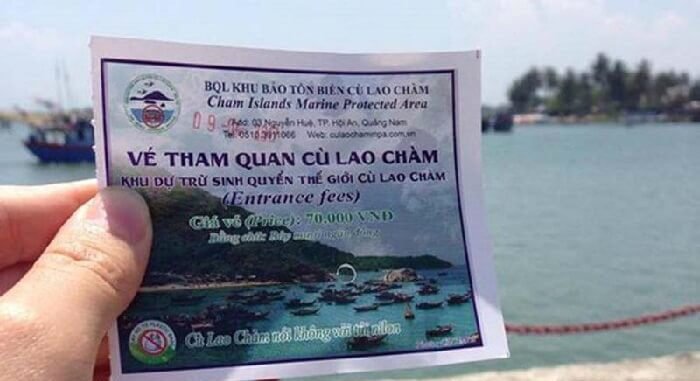
What to Eat on the Cham Islands
When visiting the Cham Islands, food is an essential part of the experience. Thanks to the islands’ fishing tradition and abundant marine life, the cuisine here is dominated by fresh seafood dishes, often prepared with simple methods to highlight the natural flavors. Sitting down to a meal with the sea breeze and views of colorful fishing boats makes every bite unforgettable.
🦀 1. Stone Crab (Cua Đá)
- The island’s most famous delicacy, stone crabs are small, rare purple crabs that live in rocky caves along the shoreline.
- Their meat is firm, slightly sweet, and incredibly rich in nutrients.
- The most popular cooking methods are grilling over charcoal or steaming with lemongrass and salt, paired with lime pepper sauce.
- Best season: March – June, when the crabs are at their plumpest.
🐚 2. Vu Nang Shellfish
- A type of clam found only in the Cham Islands, known for its tender, sweet flesh.
- Locals usually grill them over an open fire, topped with peanuts, scallions, and chili sauce, or steam them with lemongrass for a lighter taste.
- Often served as a sharing dish with cold beer by the beach.
🦞 3. Lobster (Tôm Hùm)
- Considered the “luxury” of Cham Islands cuisine, lobsters are caught fresh and served the same day.
- The two most common preparations are:
- Grilled with butter and garlic for a smoky aroma.
- Steamed with beer to keep the natural sweetness intact.
- While pricier than other dishes, this is a must-try for seafood lovers.
🐠 4. Other Fresh Seafood Highlights
- Squid & Cuttlefish: Often grilled, stir-fried with pineapple, or cooked in a sweet-and-sour tamarind sauce.
- Fish Hotpot (Lẩu Cá): A communal meal where fresh fish is simmered with herbs, vegetables, and tamarind broth, served with rice noodles.
- Sea Urchins (Nhum Biển): Sometimes eaten raw with lime and wasabi, or grilled with spring onions and peanuts.
🍳 5. Non-Seafood Options
While seafood dominates local menus, there are still choices for non-seafood eaters:
- Stir-Fried Pork with Vegetables: A hearty dish often served with rice.
- Omelets or Fried Eggs: Simple but filling, especially at homestays.
- Vegetarian Stir-Fries: Seasonal greens like morning glory or papaya salad, cooked with garlic and soy sauce.
🌴 6. Dining Experience
Most meals on the Cham Islands are casual, eaten at family-run restaurants or homestays right by the beach. Don’t expect luxury dining, but rather home-cooked flavors with the freshest possible ingredients.
👉 Tip: Seafood prices are usually by weight, so ask before ordering to avoid surprises. And since everything is caught locally, dishes can vary by season—what you eat in April may be different from what’s available in October.
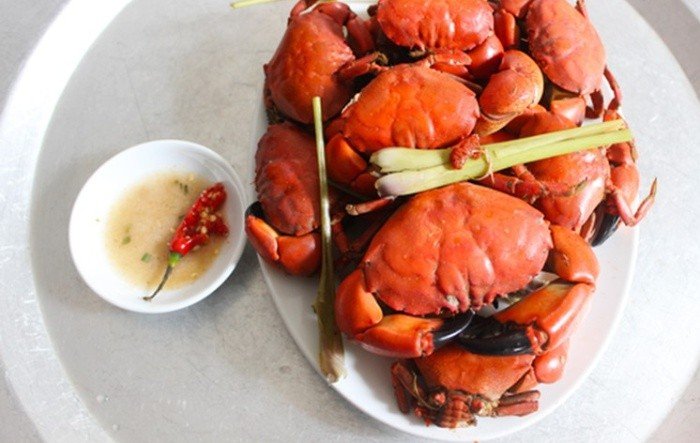
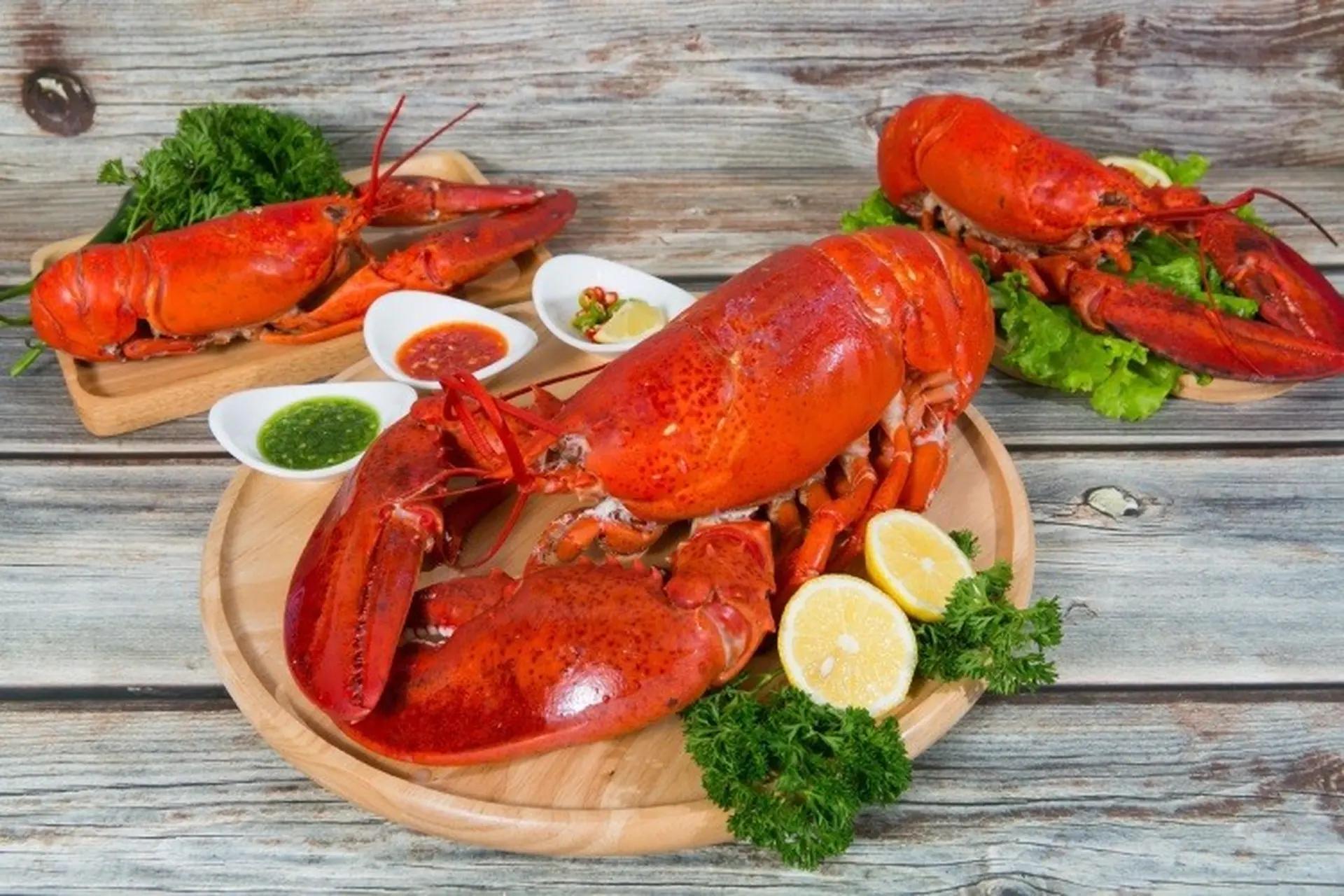
Practical Travel Tips for the Cham Islands
Visiting the Cham Islands is a highlight of any trip to central Vietnam, but being prepared will make your journey smoother and more enjoyable. Since the islands are part of a UNESCO-recognized Biosphere Reserve, both environmental awareness and traveler safety are important. Keep these practical tips in mind before you go:
🚤 Boat Travel & Safety
- Avoid speedboats if pregnant or traveling with infants. The bumpy ride can be uncomfortable and even unsafe.
- Choose your seat wisely. If you are prone to seasickness, sit toward the back of the boat where movement is less intense. Bring motion-sickness tablets or ginger candy if needed.
- Pack lightly for the crossing. Large suitcases are inconvenient on speedboats and small piers—bring only essentials in a backpack.
💰 Money Matters
- Bring enough cash. ATMs are not available on the islands, and most restaurants, homestays, and shops do not accept credit cards. Carry small denominations (VND 10,000–50,000) for meals, boat rides, and souvenirs.
🌱 Environmental Awareness
- Single-use plastics are restricted. Plastic straws and bags are banned, and visitors are encouraged to bring refillable bottles and eco-friendly items.
- Respect coral reefs and marine life. Never touch, step on, or take coral. Avoid collecting shells, starfish, or sand as souvenirs.
- Use reef-safe sunscreen. Regular sunscreen contains chemicals harmful to coral reefs—opt for eco-friendly alternatives.
🧳 What to Bring
- Light, breathable clothing for hot weather.
- A hat, sunglasses, and sunscreen for strong sun exposure.
- Swimwear and quick-dry clothes for snorkeling and water activities.
- Insect repellent, especially if you plan to stay overnight.
- Waterproof bags to protect electronics from splashes.
🛂 Health & Safety
- Consult a doctor before diving if you have heart conditions, asthma, or high blood pressure.
- Drink plenty of water—heat and salt air can dehydrate quickly.
- Watch your step on rocky paths and piers; footwear with good grip is recommended.
- Be cautious with personal belongings, especially during high season when beaches and boats are crowded.
📶 Connectivity & Comfort
- Internet access is limited—many homestays offer basic Wi-Fi, but expect patchy coverage.
- Electricity is available, but some smaller guesthouses may restrict use during the night to save energy. Bring a power bank if needed.
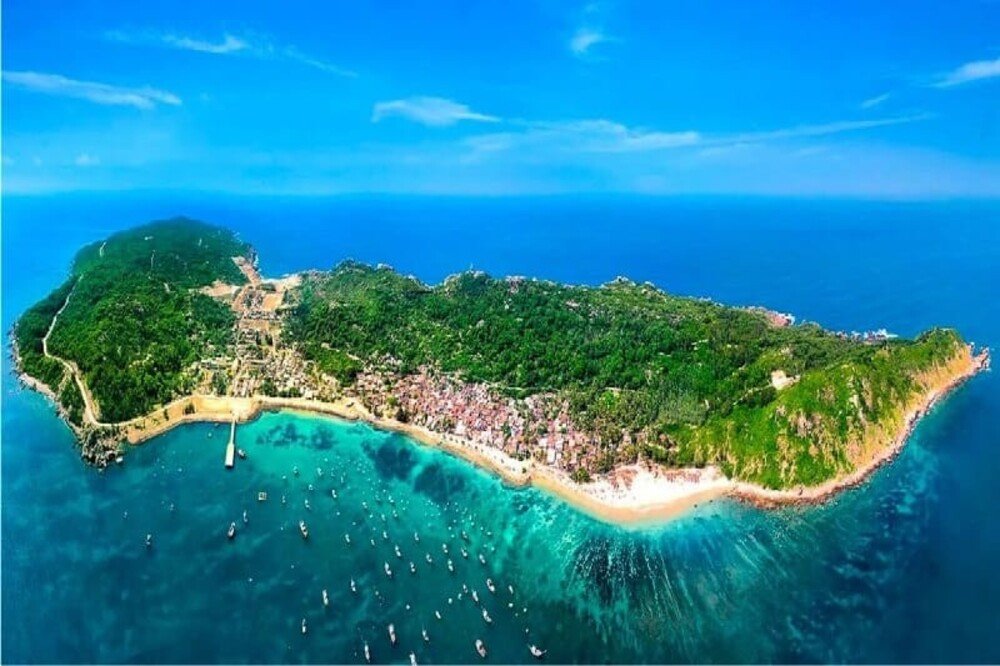
Practical Travel Tips for the Cham Islands
Conclusion
The Cham Islands (Cù Lao Chàm) are more than a quick beach getaway—they are a rare blend of natural beauty, cultural heritage, and marine biodiversity. Whether you’re snorkeling among coral reefs, hiking to scenic viewpoints, or savoring fresh seafood by the beach, these islands promise a perfect mix of adventure and relaxation.
Easily accessible from Hoi An and Da Nang, the Cham Islands are ideal for a day trip or an overnight eco-retreat. If you’re looking for one of Vietnam’s most stunning and sustainable destinations, Cu Lao Cham deserves a top spot on your travel bucket list.




